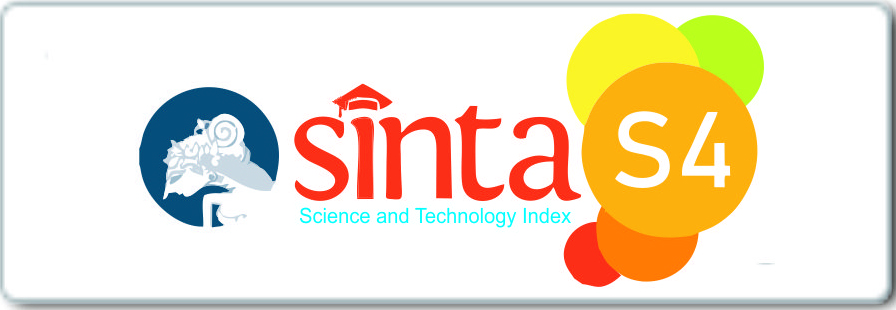Interactive dental health education on the knowledge level of little doctors students of Muhammadiyah 4 Elementary School
Downloads
Background: Dental and oral health education is conducted with the aim of changing the habits of a person, group of people, or society so they can gain knowledge, attitudes, and habits to behave in a healthy way in the field of dental and oral health. Elementary school age is the right time for teachers to introduce and instill healthy living habits. A dental and oral health education for Little Doctor students is assumed to help improve the dental and oral health of other students, teachers, and other staff of the school, as well as the people around the student outside of school. Purpose: To describe the effect of interactive dental health education on knowledge improvement. Methods: This study’s sample size was 31 Little Doctor students in the third through sixth grades. The activity in general adopted two-way communication; interactive speaking was performed to stimulate the students attentiveness to the topics, allowing students to engage with the speakers. To assess the students’ knowledge level of oral and dental health, a pre-test questionnaire was filled out prior to starting, and the same questionnaire was filled out as a post-test after completing all the agenda. Results: There were significant differences between pre-test and post-test results (P-value < 0.05), with the mean rank of the post-test group (45.56%) being significantly higher than the pre-test group (17.44%). Conclusion: The interactive education method in elementary school was found to be efficacious and more preferable as it matches the level of growth and development in school-age children.
Herijulianti E. Pendidikan Kesehatan Gigi. Jakarta: EGC; 2002.
Kementerian Kesehatan RI. Pusat Promosi Kesehatan: Pengelolaan Media Promosi Kesehatan. Jakarta; 2008.
Arsyad. Pengaruh Penyuluhan Terhadap Pengetahuan Pada Murid Kelas IV dan V SD. Media Kesehat Gigi Politek Kesehat Makassar. 2018;17(1):61–72.
Riskesdas. Riset Kesehatan Dasar, Badan Penelitian Dan Pengembangan Kesehatan Departemen Kesehatan Republik Indonesia. Jakarta; 2018.
Zurriyatun Thoyibah, Haryani, Zuhratul Hajri. Determinants of Dental and Oral Hygiene in SchoolAged Children. J Heal Sci. 2023 Feb 28;16(01):92–8.
Huda MJ, Pertiwi AY. Keefektifan Media Audiovisual Terhadap Motivasi Belajar Siswa di Sekolah Dasar. J Pendidik Ris dan Konseptual. 2018 Oct 29;2(4): 332.
Jampel IN, Puspita KR. Peningkatan Hasil Belajar Siswa Sekolah Dasar Melalui Aktivitas Pembelajaran Mengamati Berbantuan Audiovisual. Int J Elem Educ. 2017 Sep 8;1(3):197.
Aliviameita A, Purwanti Y, Wisaksono A. Pelatihan Dokter Kecil Sebagai Upaya Mengembangkan Usaha Kesehatan Sekolah di Sekolah Dasar Kabupaten Sidoarjo. JPM (Jurnal Pemberdaya Masyarakat). 2019 May 30;4(1):283–90.
Herfanda E, Wahyuntari E. Optimalisasi Peran Dokter Cilik Di Sd Muhammadiyah Karangkajen Yogyakarta. J Pengabdi Masy Sasambo. 2021 May 1;2(2):202.
Selvia A. Seri Pengetahuan UKS. Sidoarjo: Masmedia Buana Pustaka; 2009. 56 p.
Setijanto RD, Rachmawati RY, Kandar HS, Hartono DRN, Novitananda A, Laksono RG, et al. Sarana Sehat Kalijudan (SARASEHAN) Whatsapp Group: A Platform to Disseminate Children’s Dental and Oral Health Information. Indones J Dent Med. 2020 Jun 21;2(1):10.
Siswanto SH, Abraham JF, ‘Aini NQ, Damayanti M, Wulansari AA, Aprilia V, et al. The Effect of Identification and Management of Dental Health Problems on Kindergarten and Elementary School Teachers Knowledge Levels in Keputih Public Health Center (Puskesmas). Indones J Dent Med. 2020 Jun 21;2(1):16.
Hutapea YVM, Andiyani I, Nuradiyah F, Yusticia I, Hidayanto AR, Pramita A, et al. Preventing Dental Cavities with Mouth Rinsing Song for Elementary School Students, Sawahan District, Surabaya City. Indones J Dent Med. 2020 Jun 21;2(1):19.
Nugraha AP, Narmada IB, Noor TNE binti TA. Knowledge Enhancement about Preventive Orthodontic Treatment for Malocclusion and Stunting in Elementary School Children after Community Empowerment. Indones J Dent Med. 2023 Aug 30;6(2):66–9.
Ardani IGAW, Narmada IB, Rahmawati D. Dental Health Knowledge Improvement about Malocclusion After Oral and Dental Health Empowerment at Miftahul Ulum Melirang Islamic Junior High School, Melirang Village, Bungah District, Gresik. Indones J Dent Med. 2022;5(2):43–5.
Copyright (c) 2024 Ratri Maya Sitalaksmi, Nadia Kartikasari, Karina Mundiratri, Kurnia Ayu Lestari, Nurani Atikasari, Hendri Budi Gunawan, Panji Adhytama Pragana Setiawan, Arlita Gladys Tricia Charyadie, Firdha Putri Utami, David Aldrian, Fatimah Batul

This work is licensed under a Creative Commons Attribution 4.0 International License.
This is an open access journal, and articles are distributed under the terms of the Creative Commons Lisence, which allows others to remix, tweak, and build upon the work non-commercially, as long as appropriate credit is given and the new creations are licensed under the identical terms.
Copyright notice:
IJDM by UNAIR is licensed under a Creative Commons Atribusi 4.0 Internasional.
- The journal allows the author to hold the copyright of the article without restrictions.
- The journal allows the author(s) to retain publishing rights without restrictions.
- The legal formal aspect of journal publication accessibility refers to Creative Commons Attribution (CC BY)
















